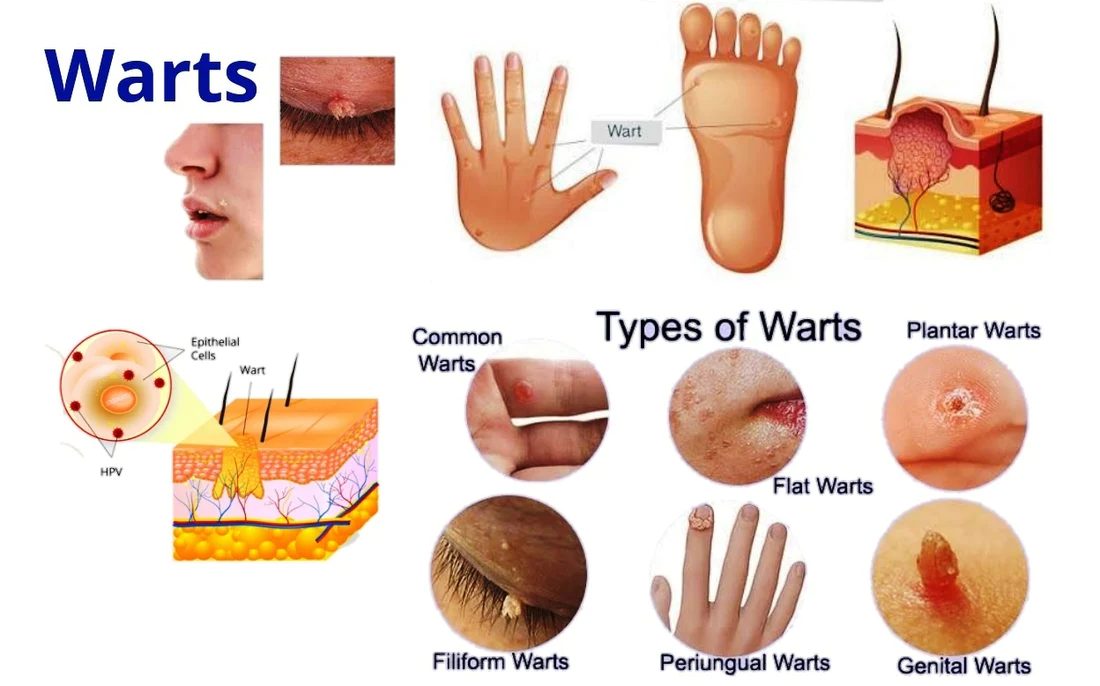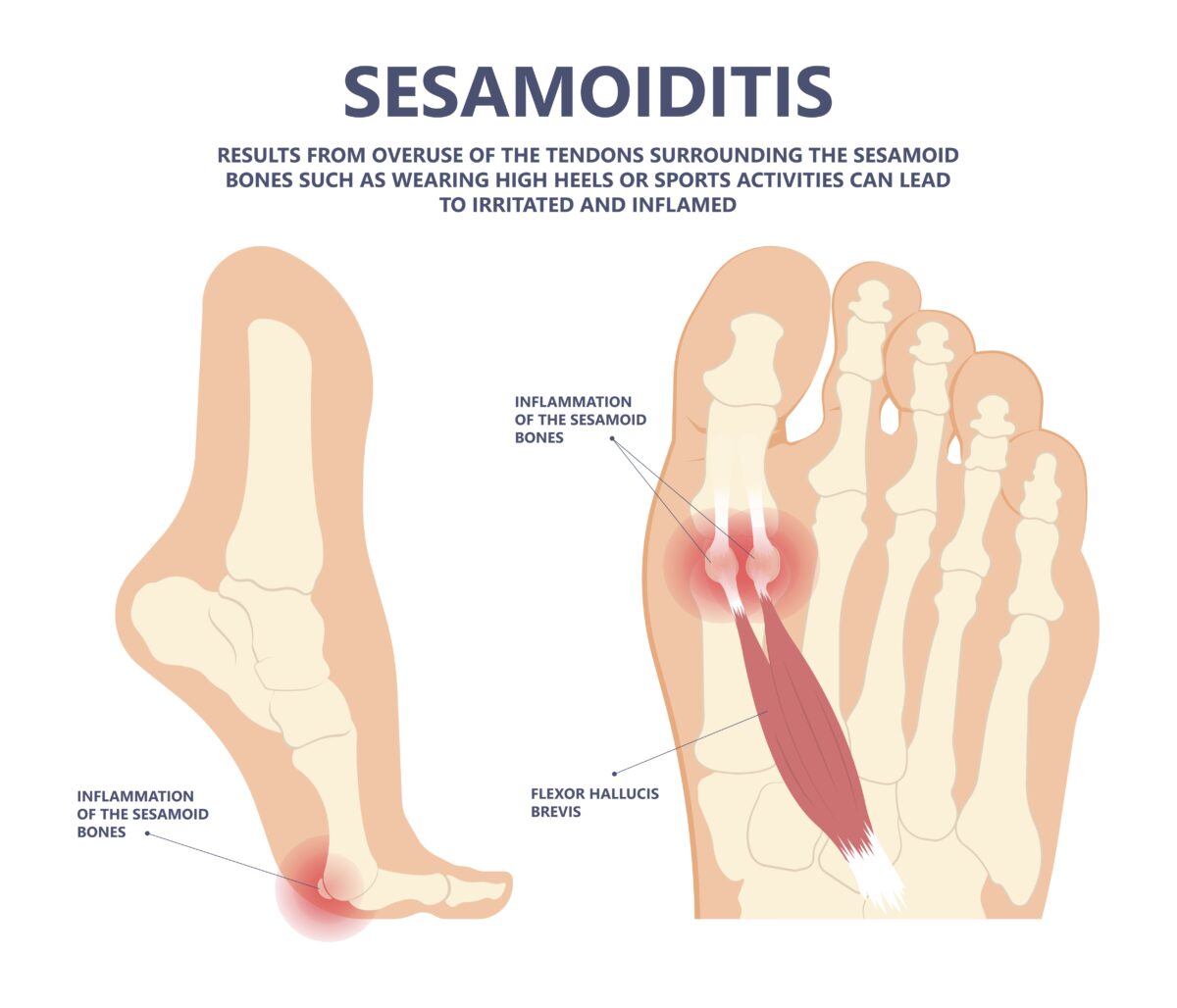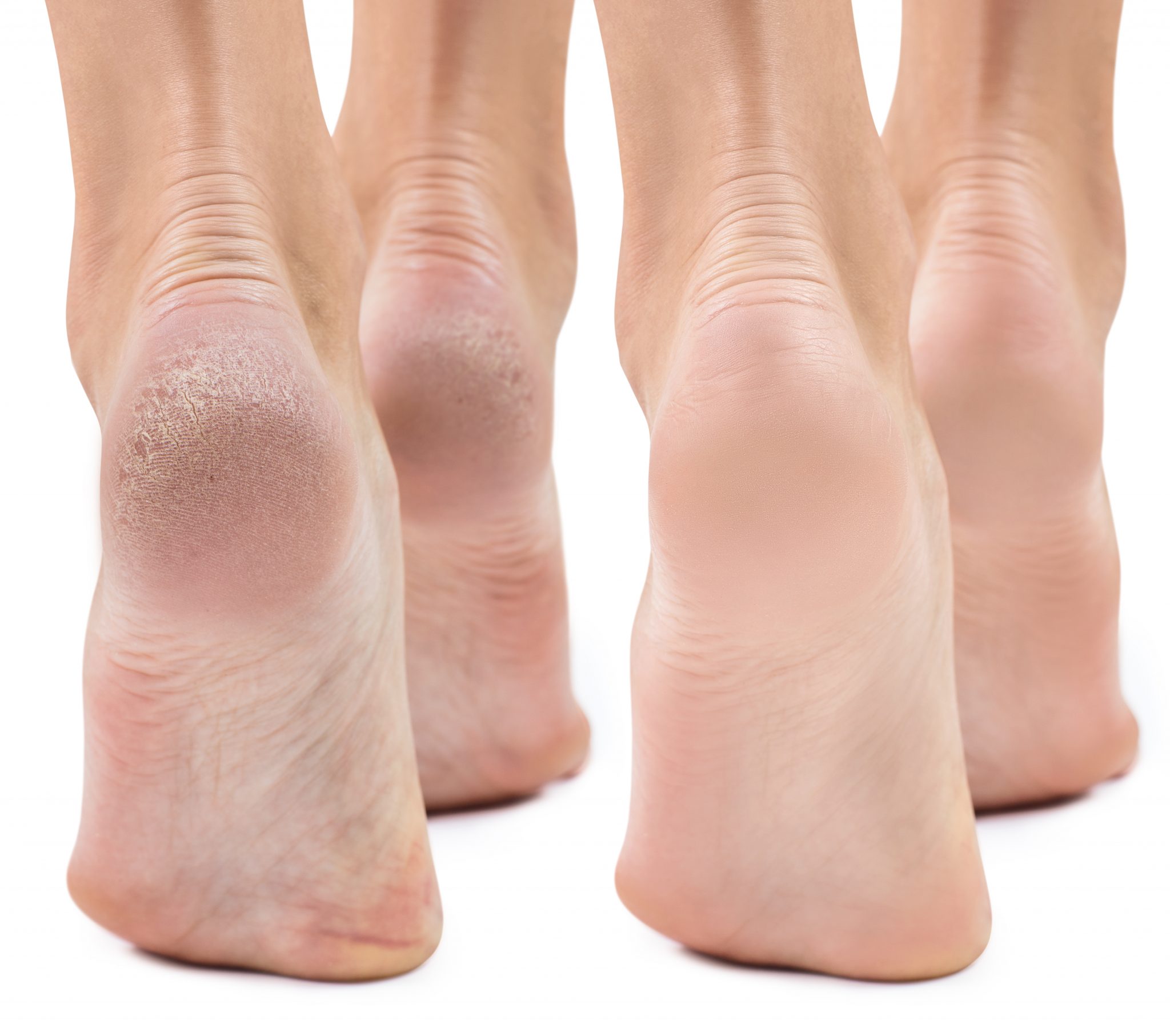Discover the ultimate guide to warts, including types, causes, and effective treatments. Learn how to manage these pesky skin growths with confidence and reclaim your skin’s health. Dive into our comprehensive article for expert insights and tips.
Introduction
Warts, those persistent and unwelcome guests on our skin, are more than mere cosmetic annoyances. This comprehensive guide dives deep into the world of warts, offering a thorough understanding of their nature, causes, and the best ways to manage or eradicate them. Armed with this knowledge, you’ll be well-equipped to tackle warts head-on and embrace healthier, clearer skin.
Table of Contents
What Are Warts?
Warts are small, benign growths on the skin caused by different strains of the human papillomavirus (HPV). They can appear anywhere on the body but are most commonly found on the hands, feet, and face. These are contagious and can spread through direct contact with the wart or something that touched the wart.

Types of Warts

1. Common Wart (Verruca Vulgaris)
Appearance: These are characterized by their rough, cauliflower-like texture and typically appear as raised bumps on the skin.
Location: Most commonly found on the hands, fingers, and elbows, where breaks in the skin frequently occur.
Symptoms: While generally painless, they can be unsightly and may cause minor discomfort if located in areas of frequent pressure or use.


2. Plantar Wart (Verruca Plantaris)
Appearance: Plantar wart is hard, grainy, or fleshy growths on the foot’s sole. They often have a central black dot due to blood vessels clotting.
Location: Sole of the foot, particularly under high-pressure points like the heels or balls of the feet.
Symptoms: Can be painful, feeling like walking on pebbles. Their growth inward due to body weight pressure can complicate walking or standing.
3. Flat Wart (Verruca Plana)
Appearance: These are smaller, smoother, and flatter wart, often appearing in large numbers.
Location: Typically found on the face, thighs, or arms, making them more noticeable and potentially impacting self-esteem.
Symptoms: Generally painless, but their proliferation can cause cosmetic concerns and potential itching.


4. Filiform Wart
Appearance: Recognizable by their long, thin, thread-like projections, resembling tiny brushes.
Location: Commonly grow on the face, particularly around the mouth, nose, and eyes, areas sensitive to touch and appearance.
Symptoms: These warts can grow quickly, causing discomfort and significant cosmetic concern due to their prominent facial location.
5. Periungual Warts
Appearance: Rough-textured warts that can disrupt the natural growth of nails.
Location: Appear around or under the toenails and fingernails, potentially embedding under the nail bed.
Symptoms: Can be painful and may lead to nail deformation, detachment, or fungal infections if left untreated.

Risk Factors
Several factors can increase your susceptibility to developing warts, beyond the basic modes of transmission:
| Compromised Skin Integrity: Activities that lead to skin damage, such as shaving or other forms of hair removal, can create entry points for the virus. |
| Direct Contact: Touching wart on another person or on oneself (autoinoculation) can spread the virus. Sharing personal items like towels or razors also poses a risk. |
| Moist Environments: Walking barefoot in communal showers, locker rooms, or around pools can increase exposure to strains of HPV known to cause plantar wart. |
| Immune System Health: Individuals with weakened immune systems, whether from conditions like HIV/AIDS or from immune-suppressing medications, are more prone to wart. |
| Age: Children and teenagers, due to their more frequent scrapes and cuts along with less mature immune systems, are particularly susceptible to wart. |
Recognizing Warts: A Closer Look
Identifying wart involves more than noting a bump on the skin; understanding their distinct characteristics can aid in early detection:
| Texture and Color: Wart often have a rough texture. They can be the same color as your skin or slightly darker. The surface may be smooth or bumpy. |
| Black Dots: Commonly referred to as wart “seeds,” these are actually clotted blood vessels that supply the wart with blood. |
| Pain and Discomfort: While many warts are painless, those in areas subject to pressure or friction, like the soles of the feet, can be painful. |
| Growth and Spread: Wart can grow in size and number. Plantar wart, for example, may cluster together in a mosaic pattern. |
Solutions and Management Strategies
Over-the-Counter Treatments
- Salicylic Acid: Available in various forms (liquid, gel, or patches), salicylic acid gradually dissolves the wart layer by layer. For optimal results, soak the wart in warm water and gently remove dead tissue with a pumice stone or emery board before application.
- Freezing Sprays (Cryotherapy Kits): These products can freeze wart at a temperature much lower than traditional ice, similar to professional cryotherapy. Precision in application is crucial to avoid damaging surrounding skin.
Professional Medical Treatments
- Cryotherapy: A dermatologist applies liquid nitrogen to the wart, causing a blister to form underneath it, and the dead tissue sloughs off within a week. Multiple sessions may be required for complete removal.
- Cantharidin: Known as “beetle juice,” this substance is painted on the wart, covered with a bandage, and washed off after a few hours, causing a blister to form and lift the wart away from the skin.
- Surgical Removal: Options include cutting out the wart (excision) or using laser therapy to burn and destroy wart tissue. These methods are generally reserved for wart that have not responded to other treatments.
- Immunotherapy: This approach aims to harness the body’s immune system to fight the wart virus. It may involve topical application of chemicals or systemic medications to trigger an immune response against the wart tissue.
Lifestyle Adjustments and Natural Remedies for Wart Prevention and Care
Beyond conventional treatments, lifestyle adjustments and natural remedies play a crucial role in managing and preventing wart. This section delves into holistic approaches and everyday practices that can support skin health, potentially reduce the recurrence of wart, and offer natural care options for those seeking alternative treatments.
Holistic Lifestyle Adjustments for Wart Prevention
Boost Your Immune System: A strong immune system can fight off the HPV virus more effectively. Incorporate a balanced diet rich in fruits, vegetables, and antioxidants. Regular physical activity and adequate sleep also support immune health.
Maintain Skin Care Hygiene: Keeping your skin clean and dry is essential. Moist environments can encourage the growth of wart, especially on the feet. Use gentle, non-irritating soaps and avoid sharing personal items like towels and razors.
Protect Your Skin: Small cuts and abrasions can make it easier for the HPV virus to enter the skin. Use protective gloves or footwear when engaging in activities that may expose you to the virus, especially in communal areas like gyms and pools.
Avoid Direct Contact: Do not touch wart on yourself or others. Use your own towels, shoes, and other personal items.
Natural Remedies for Wart Care
While scientific evidence supporting the effectiveness of natural remedies for wart is varied, many individuals find these methods beneficial as complementary treatments or when seeking less invasive options.
Tea Tree Oil: Known for its antiviral and antiseptic properties, tea tree oil applied topically can help reduce wart size and prevent infection. Always dilute with a carrier oil to avoid skin irritation.
Apple Cider Vinegar: Similar to salicylic acid, apple cider vinegar is believed to help peel away wart layer by layer when applied directly. Its acidic nature can be harsh on the skin, so it should be used with caution.
Garlic: Garlic contains allicin, an antimicrobial compound that may help treat wart. Applying crushed garlic or garlic oil directly to the wart and covering it with a bandage overnight is a popular home remedy.
Aloe Vera: Aloe vera gel, especially when derived directly from the plant, can soothe the skin and may help in treating wart due to its antiviral properties. Apply directly to the wart and cover with a clean bandage.
Dietary Adjustments: Consuming foods high in zinc and vitamins C and E can support skin health and immune function. Consider incorporating nuts, seeds, leafy greens, and citrus fruits into your diet.
Understanding the Psychological Impact of Wart
While the physical aspects of warts, including their types, causes, and treatments, are well-documented, the psychological impact they have on individuals is often overlooked. Wart, especially those located in visible areas such as the face, hands, and feet, can significantly affect a person’s self-esteem and emotional well-being.
Warts can lead to feelings of embarrassment, self-consciousness, and in severe cases, social isolation. The visible nature of wart, particularly for those that are difficult to conceal, can cause individuals to alter their behavior, avoiding social interactions or activities they previously enjoyed. This section explores the emotional challenges faced by those with wart and offers guidance on managing the psychological impact.
The Emotional Toll of Wart
Strategies for Coping with the Emotional Effects
Seek Support: Connecting with others who understand what you’re going through can be incredibly comforting. Look for online forums, support groups, or counseling services that can provide emotional support and advice.
Educate Yourself and Others: Understanding that wart are common and mostly harmless can alleviate some anxiety. Educating those around you can also reduce stigma and increase empathy.
Focus on What You Can Control: While you may not have control over having wart, you can control how you respond to them. Focusing on treatment and taking care of your mental health are positive steps forward.
Practice Self-Care: Engaging in activities that boost your self-esteem and reduce stress can help mitigate the emotional impact of wart. Whether it’s through exercise, hobbies, or relaxation techniques, find what works for you.
Consider Professional Help: If wart significantly impact your quality of life, seeking help from a dermatologist for treatment options and a mental health professional for coping strategies can be beneficial.
Frequently Asked Questions
Q: What are warts?
A: Warts are benign skin growths caused by various strains of the human papillomavirus (HPV). They can appear anywhere on the body but are most common on the hands, feet, and face.
Q: How do warts spread?
A: Warts are contagious and can spread through direct contact with a wart or something that has touched the wart, such as towels or personal items.
Q: Are there different types of warts?
A: Yes, there are several types of warts, including common warts, plantar warts, flat warts, filiform warts, and periungual warts, each with unique characteristics and preferred locations on the body.
Q: Can warts be treated at home?
A: Some warts can be treated with over-the-counter remedies like salicylic acid or home strategies such as duct tape occlusion therapy. However, persistent or bothersome warts may require professional medical treatment.
Q: How can I prevent warts?
A: Preventive measures include avoiding direct contact with warts, keeping your feet dry, using personal towels and items, and wearing protective footwear in communal showers or pools.
Conclusion
Warts, while often harmless, can be a source of discomfort and self-consciousness. Understanding the types, causes, and available treatments empowers you to tackle them head-on. Whether through at-home care, over-the-counter solutions, or professional medical treatments, you can find a method that works for you and reclaim your skin’s health. Remember, patience and persistence are key, and in most cases, warts can be completely removed, leaving your skin clear and healthy once again.










Thanks for sharing. I read many of your blog posts, cool, your blog is very good.